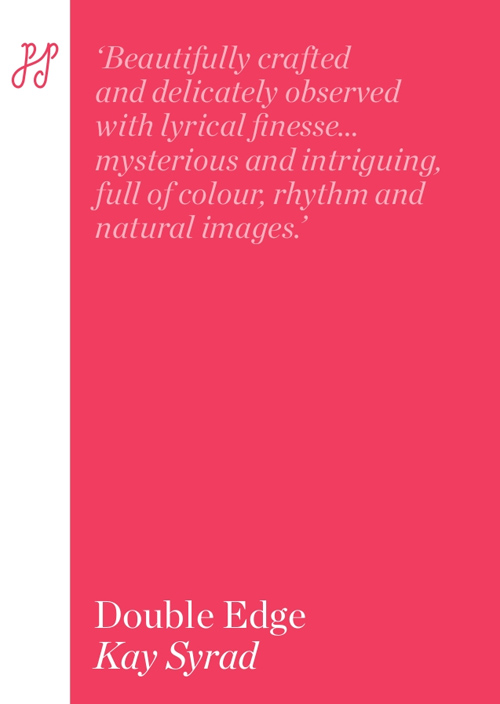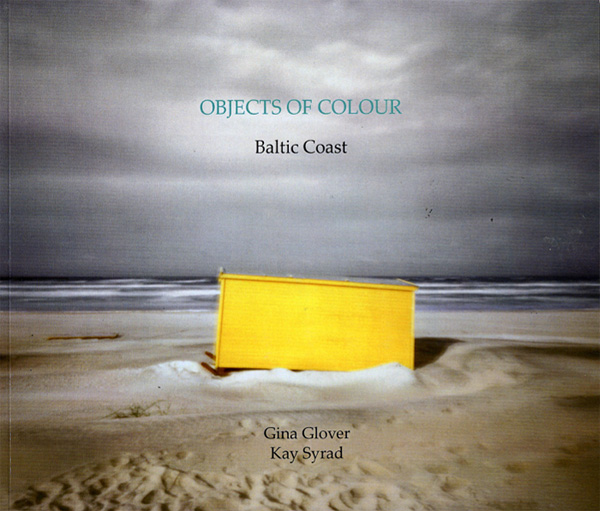‘sensitive to the textures of language […] wittily sensuous [… and] something of a formalist’ Carol Rumens, writing about Kay’s poetry in Poetry London
Kay Syrad was Poetry Editor of the longstanding journal, Envoi, from 2014 – 2020. She has written articles and poetry reviews for a number of journals and for The Poetry School’s online review series. (1)
Kay has published two novels and three collections of poetry – her fourth collection will be published by Cinnamon Press in autumn 2025. Kay was Poetry Editor for Envoi from 2014-2020 and writes poetry reviews and articles for a range of journals. Her latest collection of eco-poetry – What is near (Cinnamon Press, 2021) – is ‘a quiet engagement with moss, air, horizons, the political, the scientific, the human, the non-human and the spaces-between where these things meet.’ (Kim Lasky)

What is near: ‘…a delicate yet impassioned fusion of elegy, activism and wonder.’
Kay’s fourth solo collection will be published by Cinnamon Press in autumn 2025. In describing Kay’s eco-poetics, a reviewer of her collection Inland argued that ‘The false distinction between the human experience and the natural world which should not exist, and that is so potent in the modern world, is experientially destroyed by her work.’ (2) For further discussion about Kay’s approach to writing poetry, see Myra Schneider’s interview with Kay for Artemis 23 (2019) and Clare Best’s for Envoi 180 (2018).

Cinnamon Press: ‘Kay Syrad’s perceptive, surprising imagery and ability to see to the heart of things is never more acute than in this outstanding new collection[…] There is darkness here, but also light; there is sorrow and celebration; there are huge questions and the smallest moments exquisitely observed. Written with a graciousness of thought and an elegant control of language that makes these pieces sing, Inland marks Kay Syrad as an extraordinary poet.’
Cover image, Andrzej Jackowski. Available to buy here: Cinnamon Press
1 See for example Poetry School ; also Kay’s essay on Emily Dickinson
2 Elizabeth Ridout, Agenda online
See further reviews in Tears in the Fence 70 (2019) and Sphinx (Happenstance online).
Kay has collaborated with Chris Drury on a pamphlet t/here: a poetic glossary of human and non-human migration (East Port, 2019), with images from Drury’s camera obscura Horizon Line Chamber. Available here: Chris Drury’s website.
Kay has read at a range of venues, including the Aldeburgh Poetry Festival, Lauderdale House, Foyles, Torriano Meeting House and Kent & Sussex Poetry Society. For future readings, see Kay’s blog.
Her poetry has been published in many journals and anthologies and has won prizes or been commended in a number of competitions. Her first solo collection, Double Edge, was published by Pighog Press in 2012 (out of print; some copies available from the author), and described in a review as having
‘a palette of sometimes shocking intensity, where analysis rubs shoulders with wild leaps of exuberant celebration of creatures, colours, objects and people. Moreover, these swags of rich description are set in verse of impeccable and often formal craft.’ (Kate Foley, Artemis)
Chagall, window
There’s a red horse in the centre –
red for happiness once, when it was,
arcs of red at the top of the arch
and the great wave of blue-above-
blue in the lower half, curving up
to a higher blue and the mystery
of suffering, blue purpose of it
(Christ’s slight chest is yellow lift)
dash of white light here at the edge,
all the blue and yellow and red
(love) and four or five times green,
the smallest green
and nothing,
nothing can prepare you for this.
Published in Scintilla, 22, 2019
Tatiana’s Visit
Outside, behind the leaves, the hill is a strip
of white sand. Inside, I raise my knuckles,
bring them to the wall—You hear me at once,
far away: you are far away when you hear.
I bring the wall towards you, bring the air
to you, gathered in my fist. Behind the wall
you eat bread, soup, black grapes (you tear
one from its stem—let your lips close).
The window’s a bocca di lupo, with bars
on the inside; all I can see is a stretch of sky –
(Tania, Julca – please, tell my boys to write.)
Outside, on the white sand, I pray for you,
and you don’t pray—ever—each of us standing
on our high, stony ground, our hearts starving.

In ‘Tatiana’s Visit’, the italicised lines are from Antonio Gramsci’s prison letters, slightly adapted. Gramsci, philosopher and founder of the Italian Communist Party, was imprisoned for many years under Mussolini’s regime. His wife Julia (‘Julca’) moved back to Russia with their two sons, but her sister, Tatiana, who was a devout Catholic, visited him regularly in prison.
Bunker
Above the horizon, blue, indigo:
principle of dark. Below,
a concrete hut with a slot-mouth
lists in a river of stones.
At the slot’s lip, a white stain
(paint or chalk) draws the eye to
lichen. The drift and spread
of stones around the hut suggests
bluff, a reckless casting, while
a felted black in the foreground
cries out for end, the gone of it, cries
out to the black-hatted priest beyond.

Objects of Colour, a collection of photographs and poems, is the result of a two-year collaboration between Kay and the award-winning photographer, Gina Glover. Using a pinhole camera, Gina photographed abandoned beaches and military bases in Lithuania, Poland, Latvia and Estonia. Kay responded by writing poems that contemplate these surreal, vividly coloured images. As the artist Chris Drury writes in his introductory essay in Objects of Colour, ‘…it is this combination of thoughtless concentration on the images and thoughtful concentration which ignites the mind of the poet, draws up the interior into the light.’ (www.ginaglover.com)
Objects of Colour: Baltic Coast
Gina Glover and Kay Syrad
Foxhall Publishing, February 2009
(Currently out of print but a few copies are available from the author).